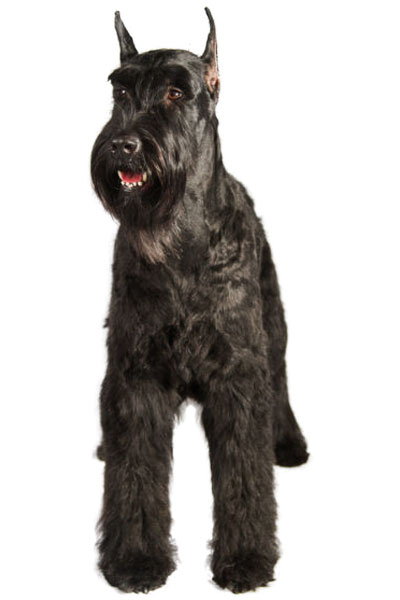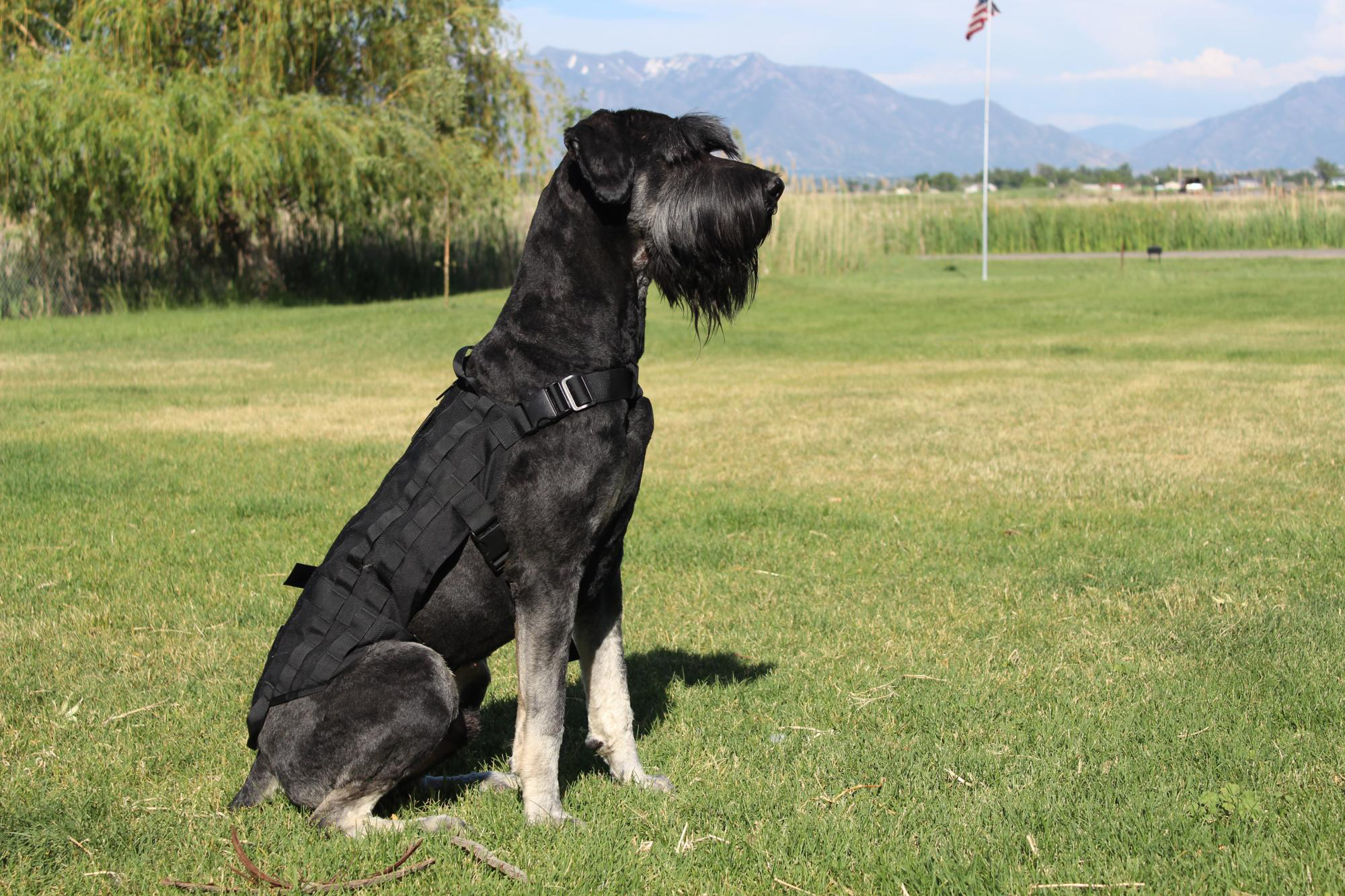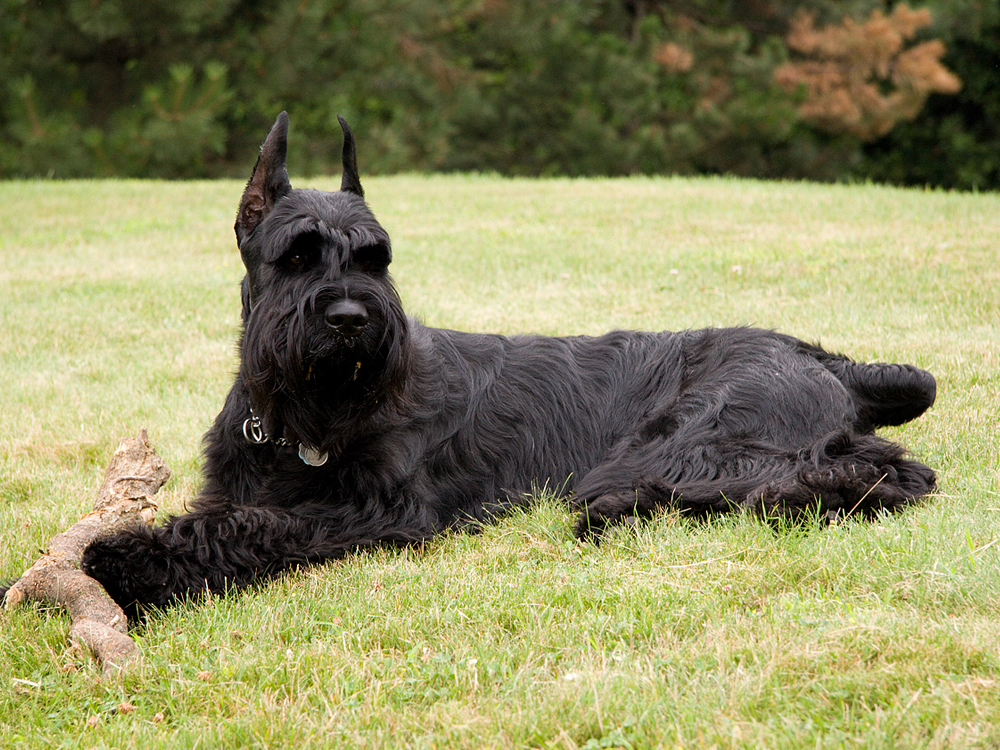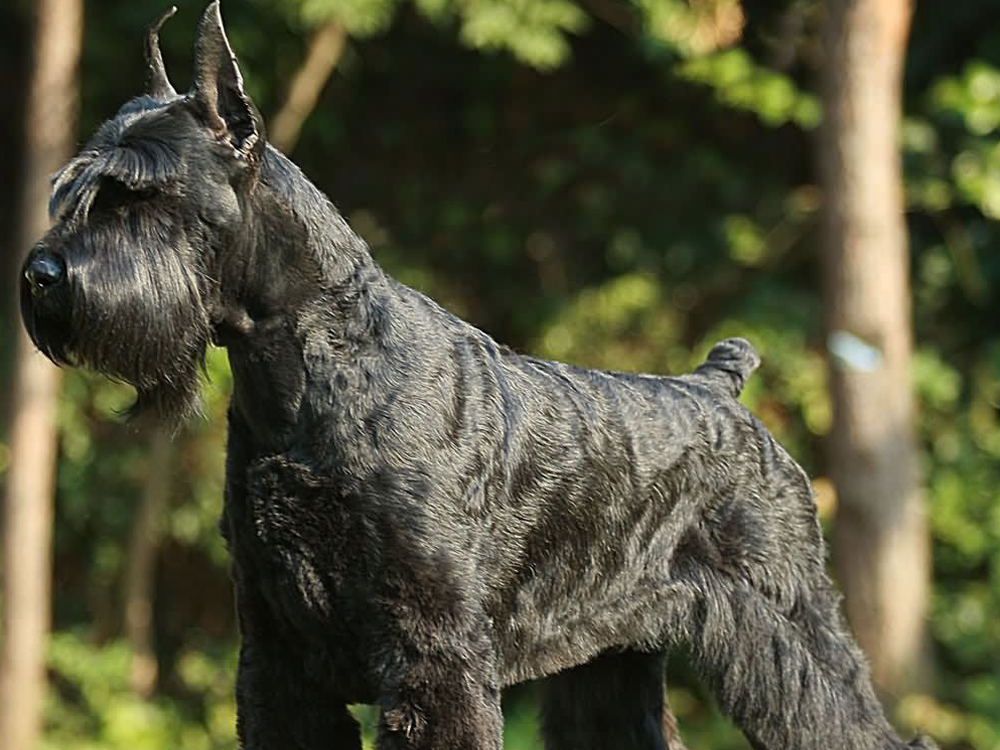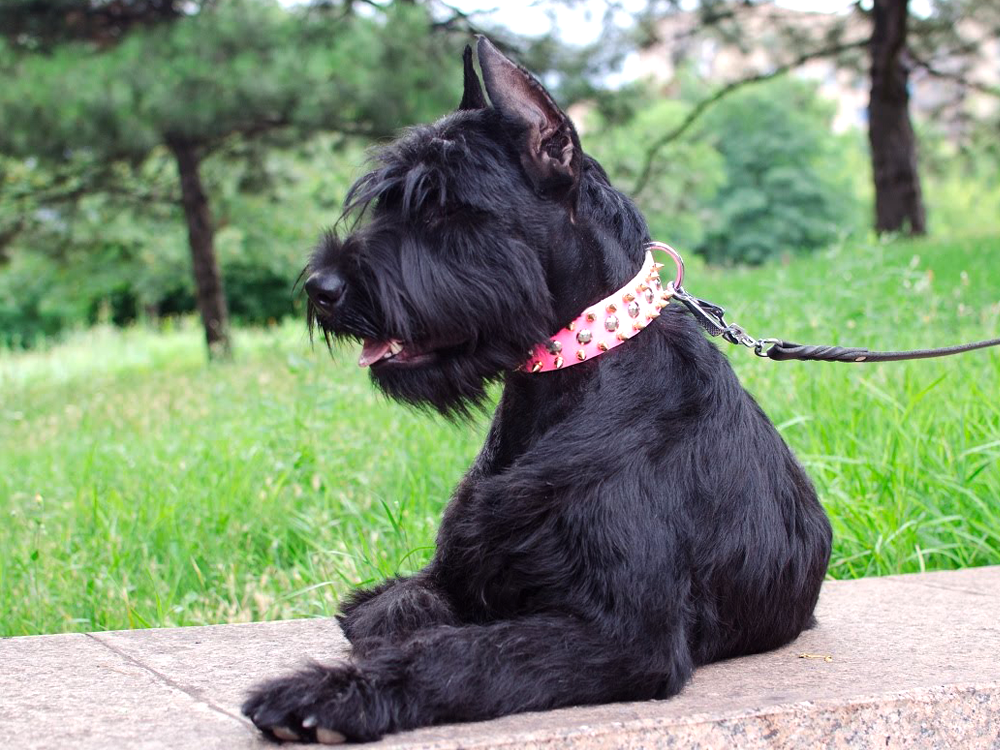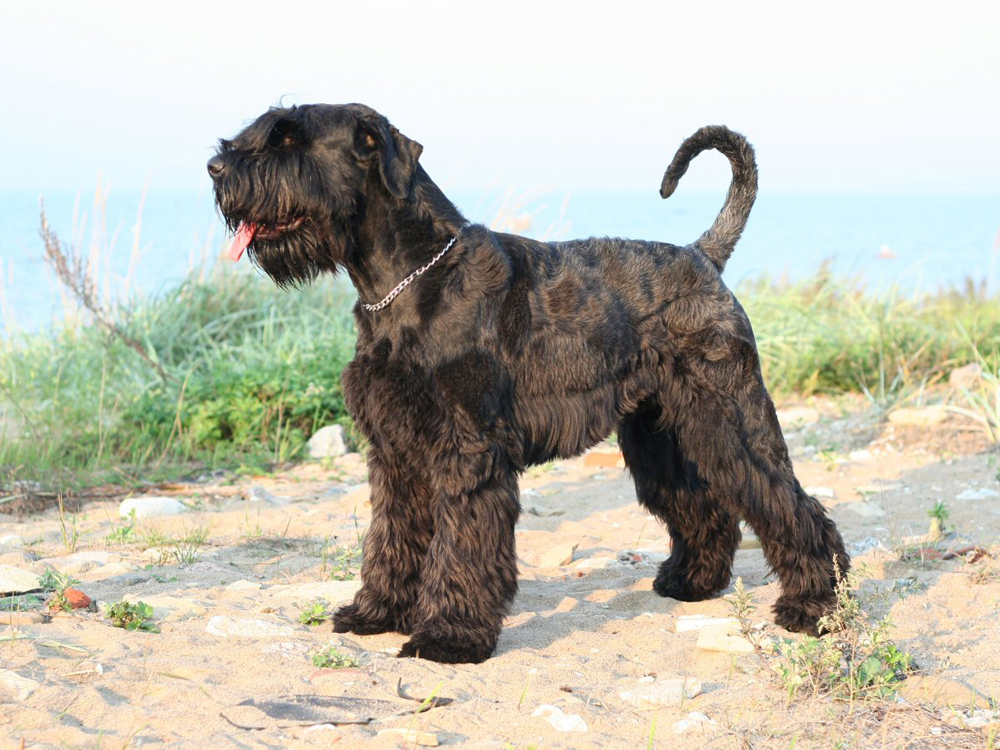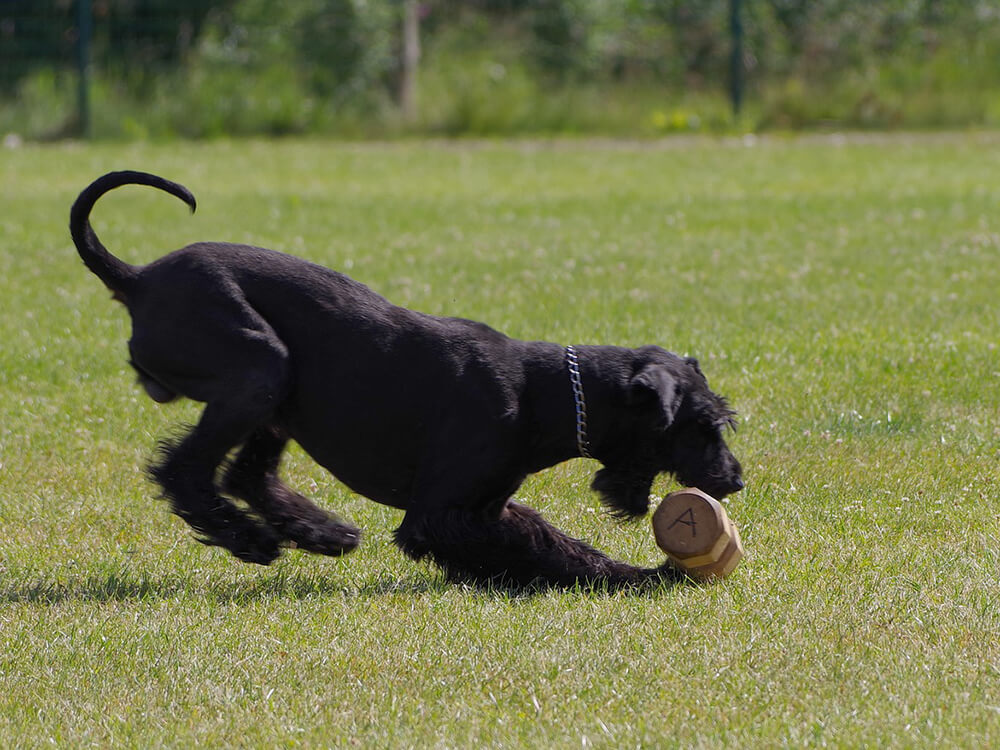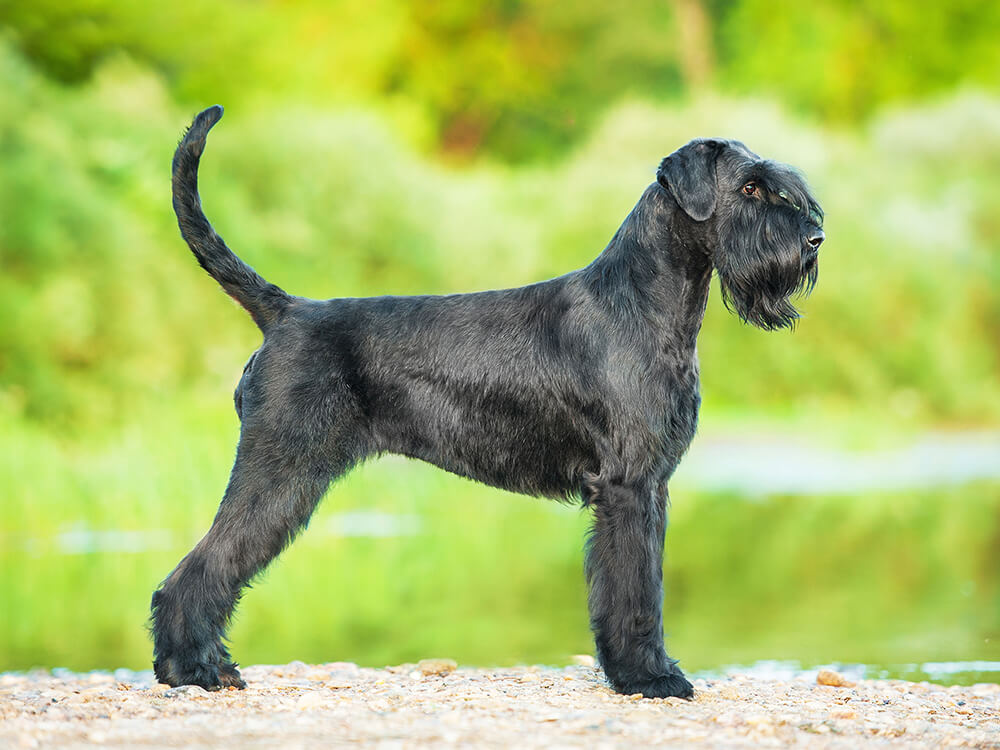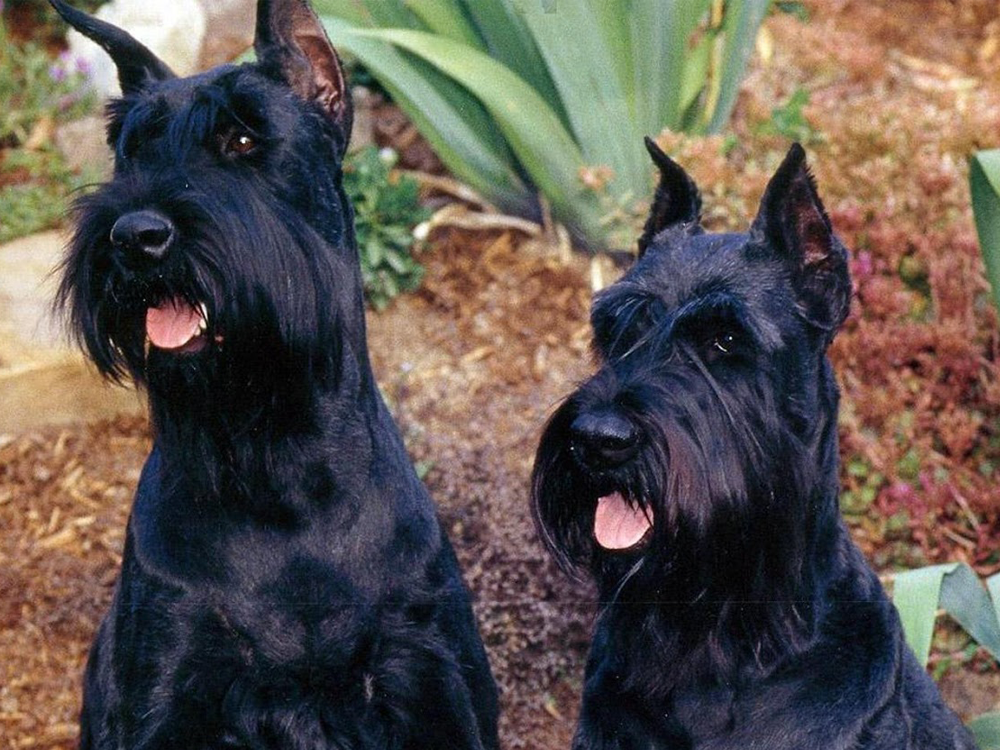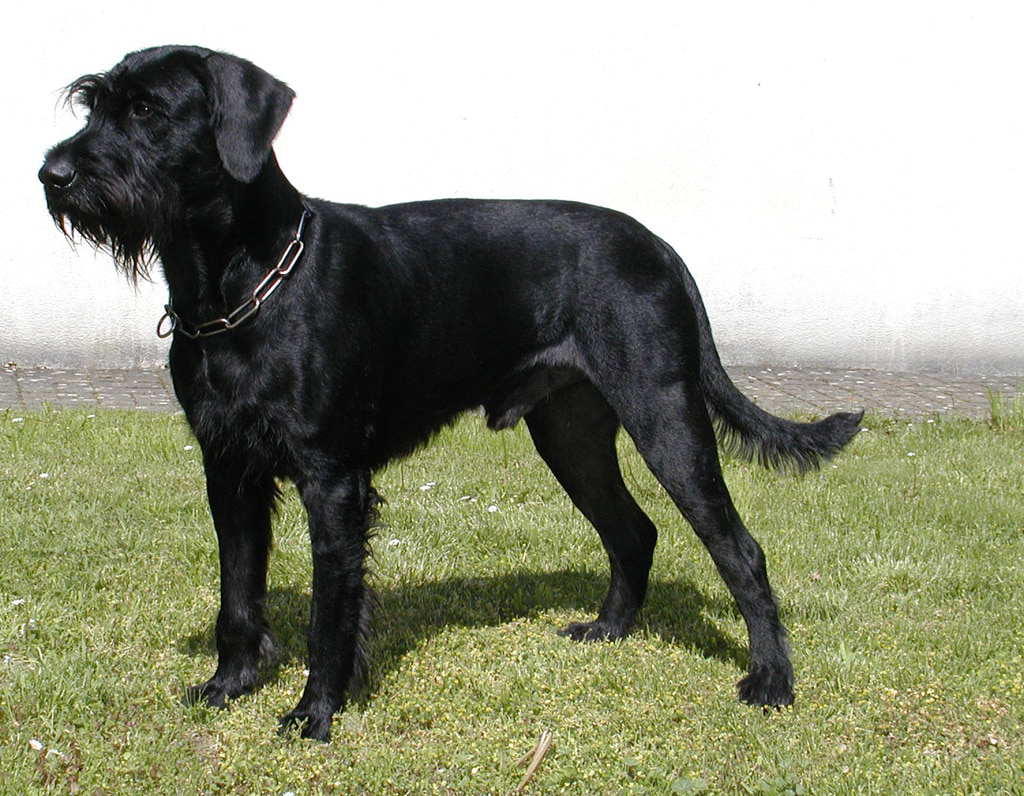
Giant Schnauzer Breed Pictures
Vital Breed Stats
| Height: | 64 - 71 cm M | 58 - 66 cm F |
| Weight: | 36 - 45 kg M | 27 - 36 kg F |
| Breed Group: | Utility Dog Group |
| Life Expectancy: | 13 - 15 years |
| KC Registered: | No |
Breed Characteristics
| Size: |  |
| Grooming: |  |
| Exercise Level: |  |
| Trainability: |  |
| Barking Level: |  |
| Good with Children: |  |
| Good with other pets: |  |
| Affectionate: |  |
| Protective: |  |
| Cost to Keep: |  |
Give a thumbs up if you love the Giant Schnauzer

0
More About the Breed
History
Although the origins are unclear, records suggest that the first Giant Schnauzer hailed from Swabia in the German state of Bavaria and Wurttemberg in the 17th century. These early breeds were rough-coated to endure the harsh German winters and vermin bites. It is believed that the breeds contributing to the Giant Schnauzer's bloodline include Great Danes, German Shepherds, Rottweilers, Dobermanns, Boxers, Thuringian Shepherds, Bouvier des Flandres and Standard Schnauzers.
With all its mixed ancestry, the Giant Schnauzer is considered the most useful and powerful among the working breeds, originally bred to be a multi-purpose farm dog to guard properties and drive animals to the market. By the 20th century, its purpose was elevated to that of a watchdog to protect breweries and stockyards in Bavaria. However, it only received its well-deserved popularity when it was utilised as a military dog during World War I and World War II.
In the 1930s, the first Giant Schnauzer was imported to America, but it was only in the 1960s that it became a favourite breed. It is KC registered.
Appearance
The Giant Schnauzer has an intimidating size, weighing 60 to 90 pounds and standing 60 to 70 centimetres at the withers. It is large and compact, giving an impression of power and resilience. The breed boasts of a strong head with a slight stop emphasised by its trademark Schnauzer eyebrows. Its powerful muzzle ends in a moderate wedge that also sports its other hallmark features such as the stubbly moustache and whiskers under the chin. The Giant Schnauzer's eyes are oval-shaped, medium in size and set forward, while the ears form a neat V-shape and set high on the dog's head. Lips are black and tight while its nose is likewise black but with wide nostrils.
Adding to its powerful form is its moderately long neck that the Giant Schnauzer holds arched, supported by equally strong shoulders. Its chest is broad and deep, well-sprung ribs and back that is level and strong, slightly higher in the shoulder area than at the hindquarters. In its compact form, the Giant Schnauzer moves in vigorous free strides. The breed sports a harsh, wiry topcoat and dense, soft undercoat considered as non-shedding and hypoallergenic. The Giant Schnauzer comes in two colours such as the black and pepper, and salt.
Grooming
Temperament
The temperament of the Giant Schnauzer can vary, often opposite. Some may be high-strung while others can be laid back and easy-going. Some Giant Schnauzers are people-oriented while others are wary of new people. The key to making sure you have the ideal temperament of your Giant Schnauzer is socialisation and training from an early age.
In general, proper training results to an excellent family pet that is well-mannered with strangers, good around children, and most especially, loyal and loving toward its family. In fact, given the right environment, the Giant Schnauzer is a clownish and silly breed who will bring laughter and joy. This breed is also territorial and protective, making it an excellent guard dog. In short, you get what you put into its training.
Intelligence
Nutrition
- Senior and less active: up to 1,580 calories daily
- Typical adults: up to 1,780 calories daily
- Physically active/working dogs: up to 1,975 calories daily
Feeding
Health
Exercise
Cost of Ownership
When you decided to get a dog, did you do the math? If not, then you should start calculating how much a dog such as the Giant Schnauzer will cost you over its lifetime. Let's start with the cost to buy a Giant Schnauzer puppy, which is around £700 to over £1,200. Pet insurance will set you back £35 to £115 a month. While the annual cost of regular veterinary consultations and basic procedures such as vaccinations, boosters and spaying will cost somewhere around £1,500, give or take.
Since the Giant Schnauzer is a large breed, it follows that its servings will be larger compared to other dog breeds. To feed this giant dog, you will have to buy high-quality dog food that costs around £40 to £60 a month, minus the dog treats. Overall, prepare to spend roughly about £100 to £180 a month to care for a Giant Schnauzer.
Is a Giant Schnauzer Right for You?
- The Giant Schnauzer is a giant dog breed, as the name suggests, weighing 60 to 90 pounds.
- It is not best suited for new dog owners and families with very young children.
- This breed is loyal, loving, territorial, and protective.
- It has a coat that is non-shedding and hypoallergenic.
- It is a multi-purpose working dog that requires at least 2 hours of daily exercise.
- Giant Schnauzers are wary of new people or strangers and will make excellent watchdogs.
